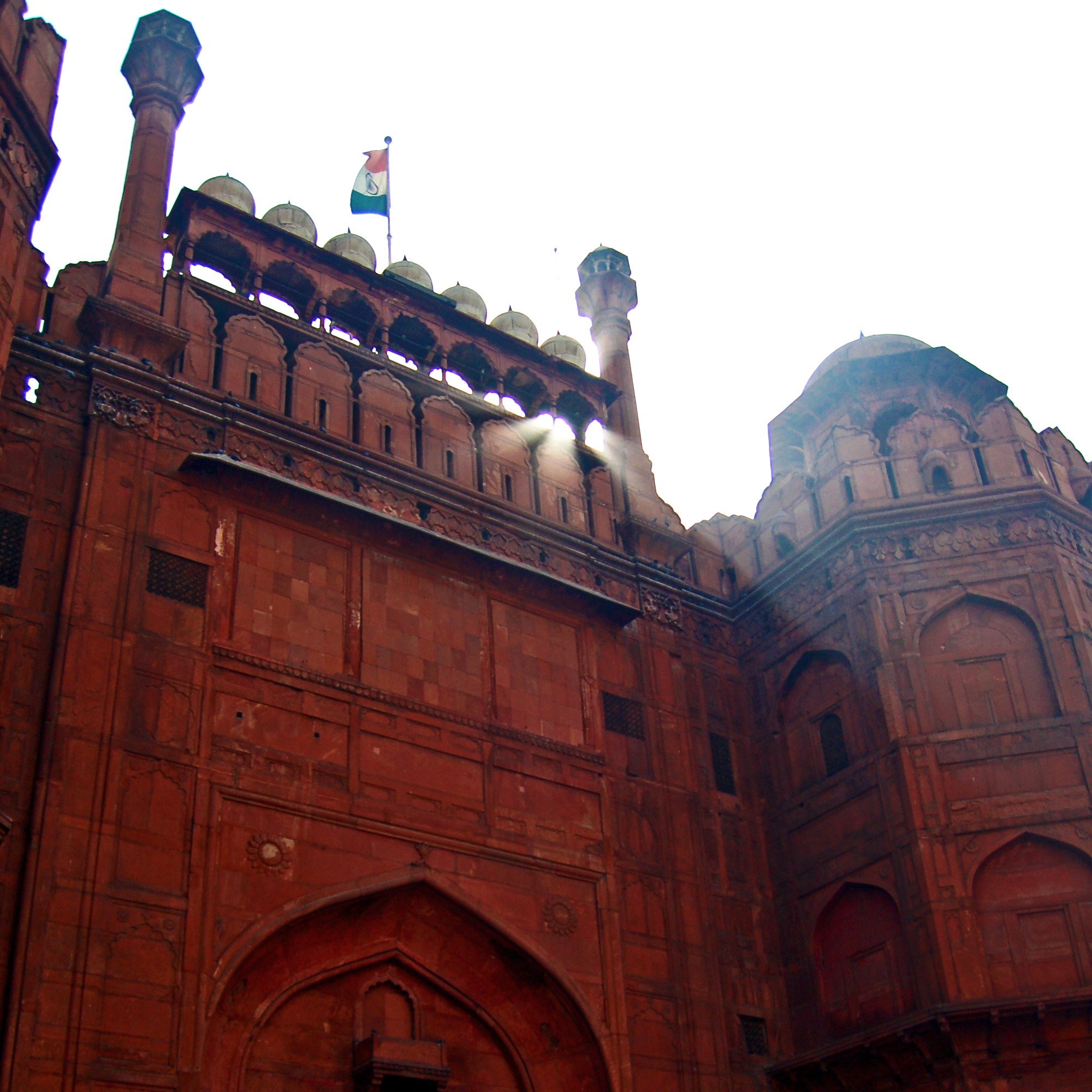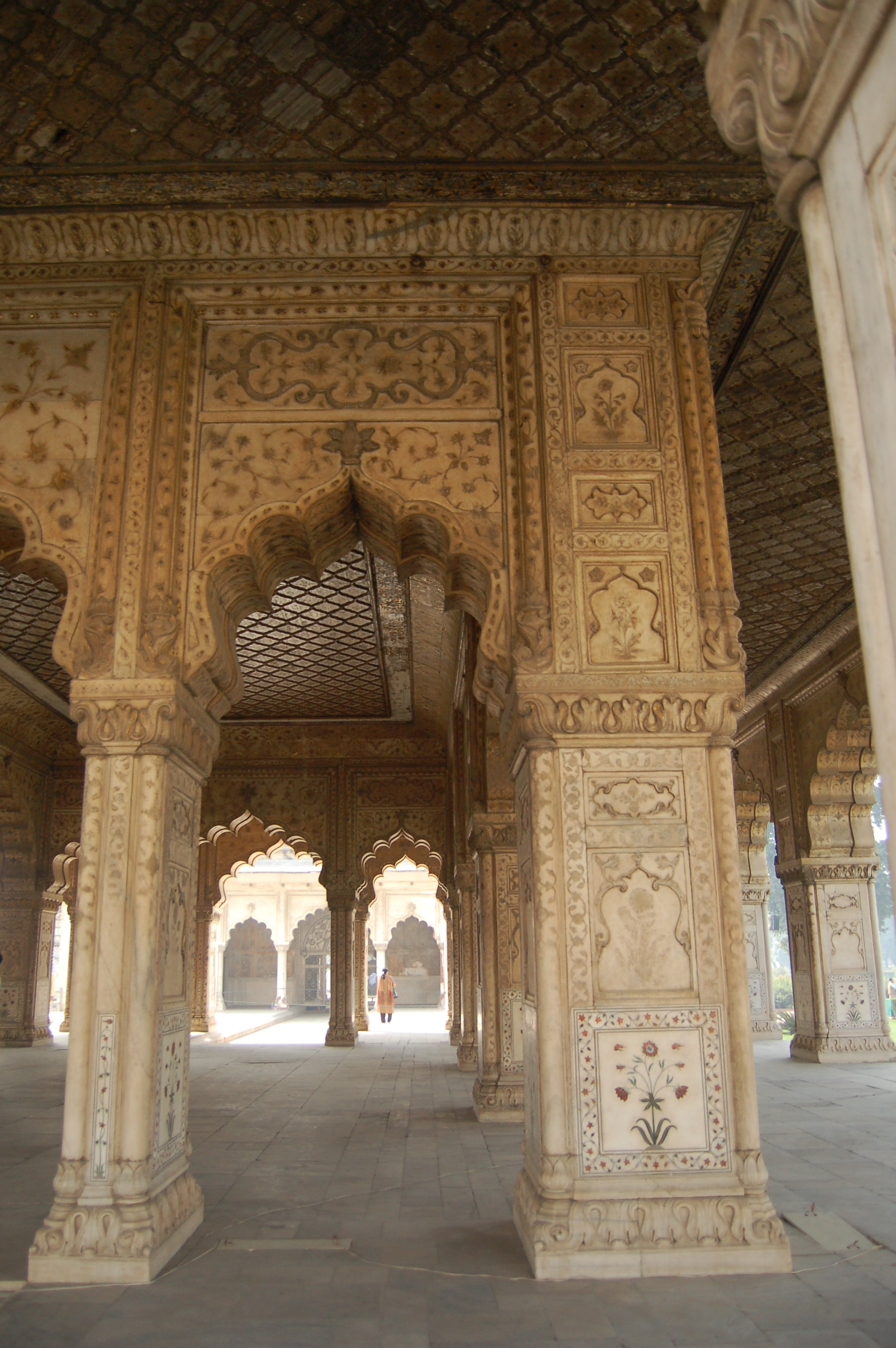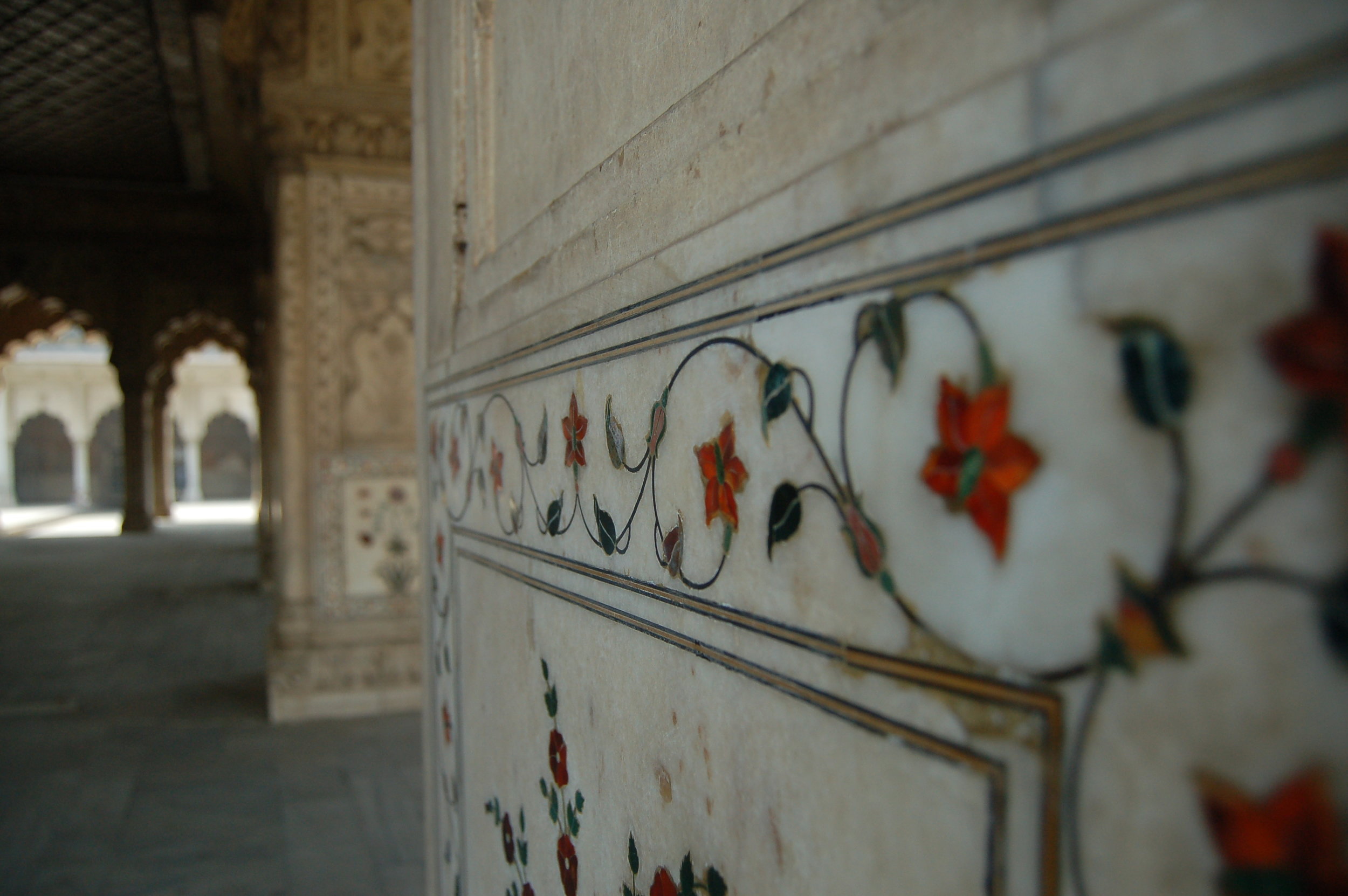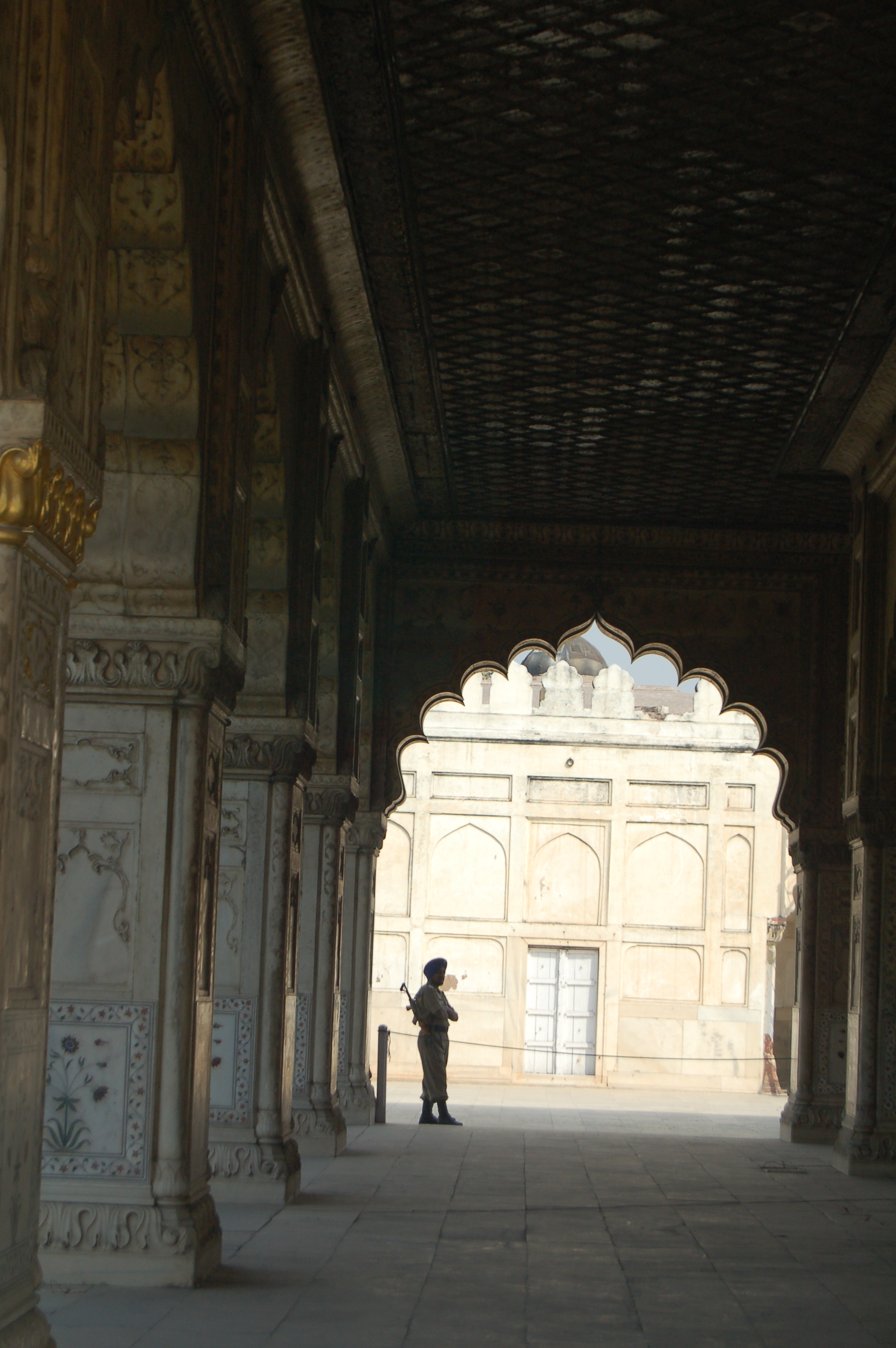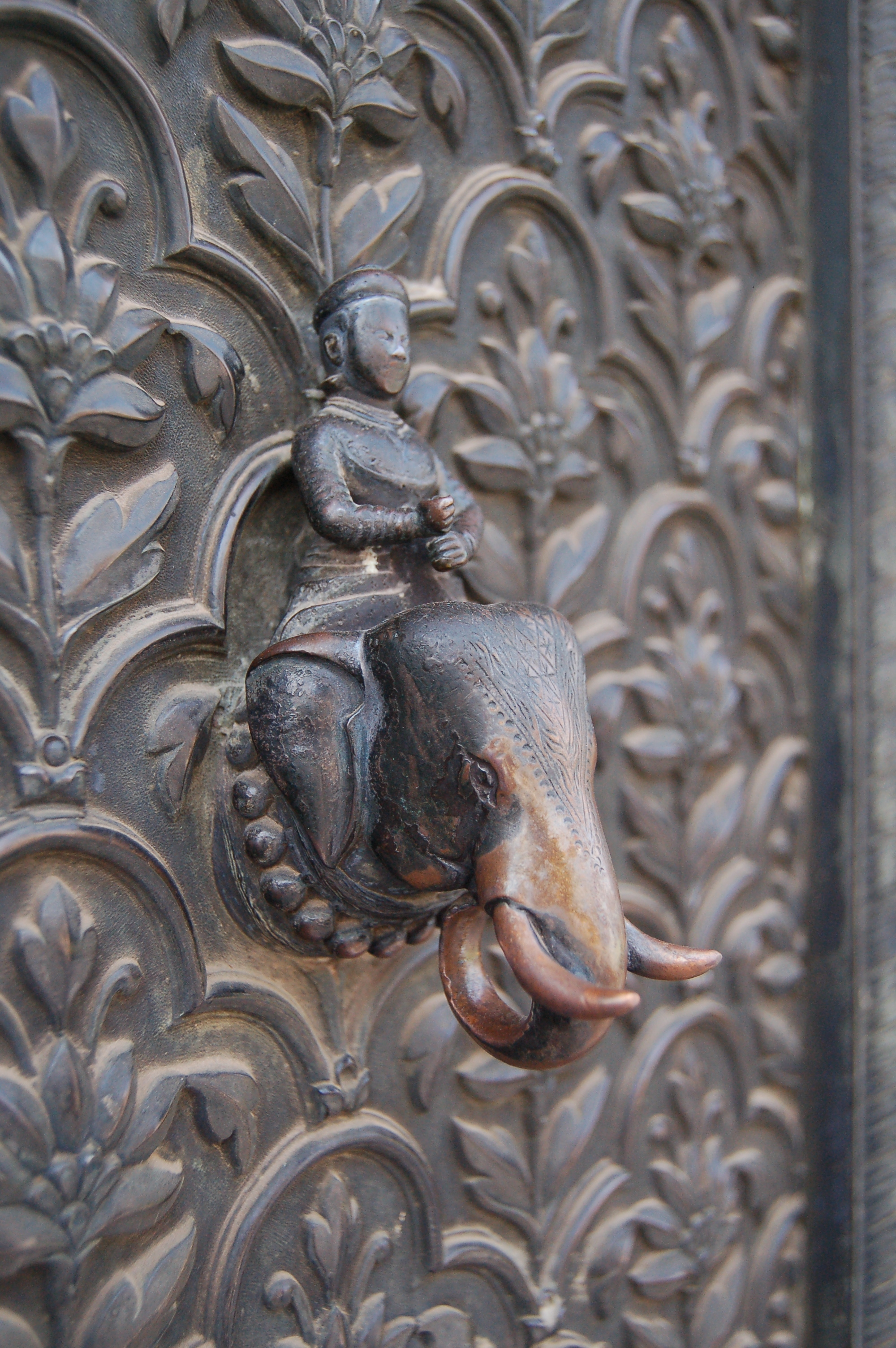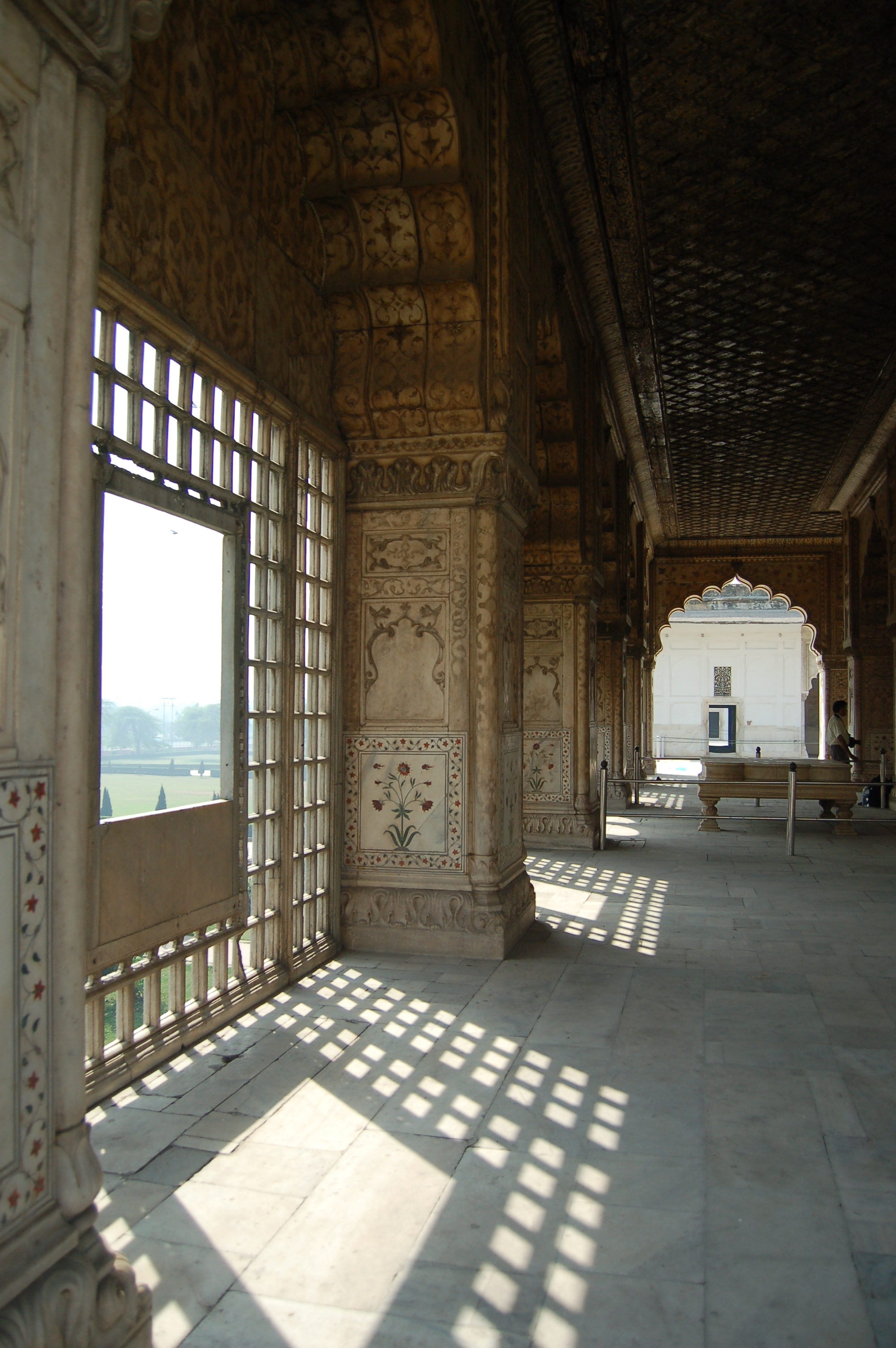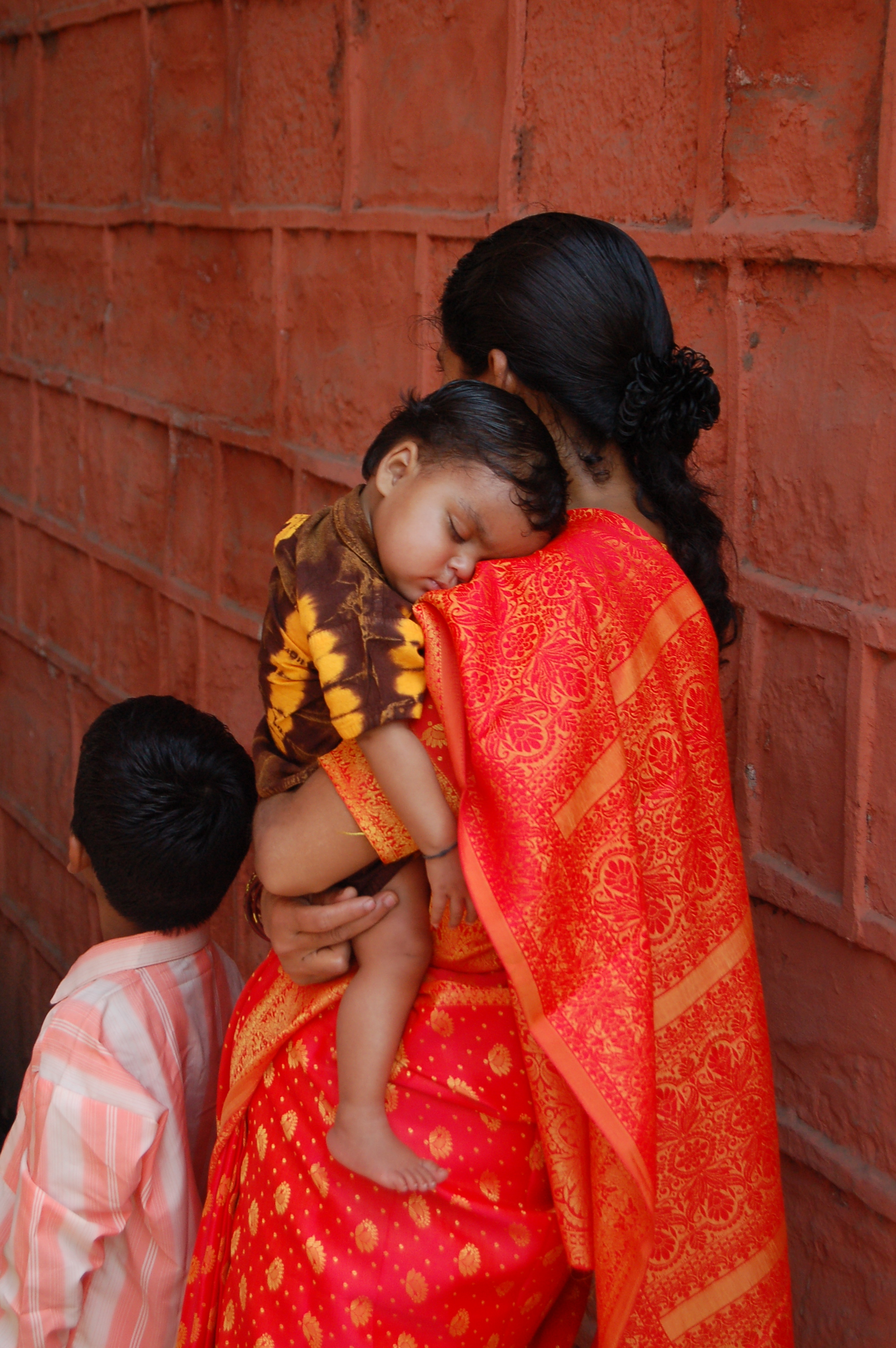ONE NIGHT IN DHOLPUR
This blog post is out of time. As in, it's about my travels to India in 2008. Hard to believe it's been eleven years! But a place like India, so vibrant and perplexing, demands a decade, or more, for the mind and spirit to fully process what it was to be there ...
NEW DELHI
Arriving in New Delhi for the first time is like standing on the edge of a cliff. You see the endless crush of people, taste the grime and exhaust of a city of 21 million, and are lost in a wave of sound until you can bear it no longer. You coax—no, command—yourself to jump into the abyss. And then, you do.
*
After we have flown for what feels like a million hours, the airport shimmers around us like a dream. We shuffle through snaking lines and before officials who nod and grunt as they stamp our visas. Then, it is out into a pulsing sea of people that takes our breath away.
There, we catch our first glimpse of Ranjit, our driver, whose mere presence is like a very, polite, measured warning. Powerful arms crossed, trim beard, dark blue turban. I am Sikh. I am skilled and serious. I will not trifle.
Naveen, the tour agent who has organized our itinerary, emerges from the throng, suave and ebullient in a grey suit; not a trickle of sweat nor a glossy, black hair out of place. He shouts my name and grasps my hand, head waggling in the gesture that we will soon come to recognize, puzzle over, and unconsciously expect. I smile and check his credentials, but that is all. The monsoon of sound drowns all hope of conversation. We hand our bags to Ranjit, who places them into a black Landrover.
I am in India for work, to shoot and document for an Asia travel company. To meet tour operators, inspect hotels, see sights. Also, I am there to accompany Kathy, my sister-in-law, as she visits the birthplace of Deepali, her daughter adopted from India, for the first time.
Meera is our hostess at the New Delhi guest house. She is lively and relaxed, the exact opposite of our jet lagged dispositions.
“Come, come,” she says, dark eyes glittering, the translucent edges of her Salwar Kameez floating out behind her as she ushers us upstairs.
She chatters softly as John, one of her staff, pours tea. I bring the cup to my lips, which are numb and buzzing. Meera has lived all over the world—Singapore, Indonesia, Romania. Finally, she returned home to open a place where visitors could come for rest, relaxation, and a first-hand introduction to Indian culture by way of good food and conversation.
"Shub ratri," she finally murmurs, before floating off. Good night.
My room's walls are red brick, the tile slick and cool. A large fan whirs overhead as I unpack, the nocturnal sounds of New Rajandir Nagar filtering in through the balcony. I tumble into bed, all weight and no grace.
Hours later, I awake with a start, eyes whipping open to the sound of footsteps and a strange, syncopated pattern—Bang! Bang! Bang! ... Bang! ... Bang! I peek out through filmy curtains. Below, a man is walking around the block, slamming the end of a large staff into the ground, over and over. In the morning I mention this to Meera.
"He is the night watchman," she explains, pouring tea and sliding roti and aloo tiki onto my plate. "He bangs the stick to show that he is hard at work deterring thieves."
The table is in the garden, and I squint up at the army of birds twittering inside the green-yellow heart of the Peepul tree. At that very instant, the men at the mosque across the street began their morning prayers. Their voices, splayed and fragmented at first, finally rise together in one deep, sonorous song, “Allahu Akbar!”
Listening, I allow my shoulders to drop, and close my eyes. When I open them again, John is standing at my elbow, patiently waiting for me to return to earth.
"You would like juice?" He holds out a pitcher sloshing with burgundy liquid.
“Please!” I say. And he fills my glass with the coldest, sweetest pomegranate juice I have ever had.
RED FORT
On our first excursion, Naveen leads us through the imposing gates of New Delhi's Red Fort—a majestic complex of red sandstone built in the mid-1600's by legendary Mughal Emperor, Shah Jehan, the same man responsible for the Taj Mahal at Agra.
We wander the smaller, more delicate outbuildings on our own, through halls, gardens, private chambers and luxuriant baths. Large birds called, kites (similar to North American hawks or eagles), soar above the fort's ramparts while flocks of smaller birds flutter from rooftop to turret. We become lost in a maze of stone archways, marble columns and elaborate stairs. The ornate beauty of each, separate hall paints a vivid picture of what was once an opulent seat of wealth and power.
JAMA MASJID
We continue on to the bustling market of Chadni Chowk. Melting into the crowd is easy, but not getting our feet run over, or our limbs sliced off by the random passing vehicle proves a bit trickier.
After browsing the market, Naveen flags down a pair of cyclos and we set off for the Jama Masjid, the only mosque in the world where women are allowed. On the way, we take in the sights, mostly shops crammed with goods and people going about their business in the streets, alleyways, and doorways.
Hijras, members of the age-old intersex population, who identify as neither male or female, wind between the lanes of cars in colorful saris, clapping their hands and offering blessings in exchange for coins.
A beggar, a man with no legs, and only one arm, pushes himself along with a block of wood, his body atop a rolling cart. In front of the Jama Masjid another man begs for alms, his body deformed; his feet seem to project directly from his torso and his arms are bent so severely that he appears almost four-legged.
We climb the many steps to the top of the Jama Masjid and hand our shoes to a man who will guard them for 20 rupees. Inside, the cool stone calms our dusty feet. We walk out into the open prayer yard which can house as many 25,000 Muslims at once, and imagine endless lines of bodies prostrate on the painted, white lines. In the center of the yard, a fountain bubbles. Children frolic in one corner, filling up an empty plastic bottle with water, while a woman splashes herself in the other end. Two other men stand, calf-deep as they pour water over their heads.
The ceiling inside the Mosque seems to soar. We stand silently in the cool, dark, expanse, admiring the ornate designs on the walls, then walk to the landing to look out over the haze of New Delhi. The city seems to spill on endlessly, cars upon cars, throngs upon throngs, with no end in sight.
*
NEW DELHI
We continue to Rajghat—Mahatma Gandhi's tomb. The gardens are a gentle, sloping line of manicured grounds and cradle his roped-off resting place, where an eternal flame flickers brightly inside a lone lantern, symbolizing his undying spirit of compassion.
We walk on, to India Gate, the national monument honoring the Indian soldiers who fought alongside the British in World War. It I heavily guarded by armed soldiers, and stands next to the river, where Indian families indulge in paddleboat rides and ice cream. I am absorbed in taking in a photo when suddenly, a gang of young Hindu girls approach, and in the blink of an eye, one grabs my right hand. I feel a sudden sting and my mouth drops open as I watch a girl pull an ink-tipped instrument across my skin, nonchalant as you please. I snatch my hand away, and shout a firm reproach, but the girl hangs on for dear life! I end up dragging her with me down the causeway, as she entreats, "Please, Miss! Just one flower!", as if her henna-ing me without my permission is just a simple misunderstanding. I look down at this pretty child, her determined face marked with mysterious smudges, and find myself between anger and laughter. But in that moment, Naveen intervenes. He scolds her loudly in Hindi and sends her away with a sour expression. There’s no harm done, I tell him. And watch her go with a blossoming ache of curiosity. I wonder where she will spend her next hours. Whether or not she will find willing customers, and make enough rupees to buy something to eat.
I catch my breath at the next stop on our tour—Hanumayan's Tomb, where we walk through a series of archways and ornamental buildings that precede the fountain-lined causeway that leads to the final tomb—a red sandstone replica of the Taj Mahal. Smaller in size, but identical in architecture, Hanumayan's Tomb is a simple and elegant. We climb up the steep steps to the top level, where we take in expansive view of the twin towers of the Jama Masjid in the distance.
At the nearby Qutab Minar, or the "Victory Tower" erected by a Muslim emperor after he conquered the region, we circle beautiful ruins, noting that sadly, the Hindu carvings that once covered the buildings were "rubbed out" (literally) by the Muslim invaders. The Qutab Minar itself, ornate in decoration, looms impressively. We are told that it is some 600-odd steps to the top, but do not make the climb.
By the end of the day, we are ragged and limp in the withering heat. True to form, Naveen’s energy has not waned and he delightfully informs us that a dinner awaits us in Vasaj Kint—at the restaurant, Sahara. It is a touristy but pleasant outdoor setting, complete with dancers preforming to a buzzing PA system and a glitteringly-dressed Kashmir troupe that travels from table to table. At their heart is a small, costumed boy who exacts intricate moves and raises his dramatically painted eyebrows in time with the drums for 10 rupees.
*
ON THE ROAD WITH RANJIT
As we head south into Rajasthan, we melt into the comfortable rhythm of the road. We stop for lunch at a roadside establishment where shopkeepers hawk Cokes and souvenirs, children press against the car and, as we are leaving, an indignant man taps the window to demand money for a photograph I snapped of a listless-looking monkey that he has chained to his wrist.
“Don’t,” Ranjit says, with a lift of his hand when I ask if I should give him something. He shakes his head curtly and turns to glare at the man, who then shuffles away abruptly.
As we drive on, Ranjit offers up small fragments of his life back home, in Bangladesh. He has a wife and two daughters. Sometimes his mother-in-law is a pill. In keeping with Sikh tradition, the hair beneath his neatly wrapped turban has never been cut. He was a Gurkha (a soldier) by trade, but driving and security has become the best living, although it keeps him far from home for months at a time. He is lonesome for his wife and daughter, but counts himself lucky to have such a well-paying job.
We bump across potholes and cross checkpoints, marveling at the beautiful countryside, the bucolic farms. A sense of ease permeates. With Ranjit, we feel safe. Each day, he stands expectantly next to the car with an indomitable stance: legs slightly spread, arms folded in front of his barrel chest.
We are staying in a string of heritage homes—palaces, by all accounts, and I can’t help but wonder where Ranjit disappears to every night. One day, I ask him where he sleeps. In the servant’s quarters, he tells me. Where they give him a cot and serve him food; he says it’s quite comfortable.
One morning as we set out, he tosses his newspaper into the seat beside him gruffly and frowns into the rearview mirror. "What's wrong?" I ask.
"Such bad people," he mutters, eyes downcast. He squeezes the. bridge of his nose as if warding off a headache.
“What is it?” I ask again, insistent.
The day before, he says, a drunken group of wedding revelers in a nearby town plucked a small boy from his bicycle and murdered the child in a barn.
We sit in horrified silence.
"Very bad people," he repeats with a shake of his head, then turns the key of our Lincoln Navigator, which starts with a reassuring purr.
*
RAJ NIWAS PALACE
We stay one night in Dholpur, a quiet outpost on the road to Agra, and are hosted at the Raj Niwas, a 19th-century palace surrounded by gardens. The hour is late when we arrive, famished and exhausted. It has been one of those days, both of us a bit on the brink, slightly homesick and road-worn.
The proprietress, an animated woman appropriately named ‘Bubbles’, settles us into a cavernous suite at the top of an elegant staircase. With bleary glee we examined the elaborate bath with eight shower heads, ornately furnished dressing chamber, antique photos of the palace’s original owners, and a 40-foot ceiling decorated with intricate tile. Cocooned in the unfamiliar silence, we drink tea and turn in.
I lay awake in the dark, listening to night sounds and imagining the drowsy heads of dynasty rulers being lulled to sleep in our very beds, centuries before.
*
TAJ MAHAL
The day we visit the Taj Mahal, the world is overcast; the atmosphere dense and muggy. We stop to buy souvenirs from men selling wares in the pungent street. They walk in noisy groups of twos and threes, huge bunches of shiny, tinkling trinkets slung over their shoulders. I feel the press of the dizzying heat as I shove a fistful of rupees through the car’s open window, sweat trickling down my back as I make my selection beneath the watchful eyes of an industrious hawker.
Inside the gates, the Taj Mahal looms at the far end. It seems to shimmer and hover in the heavy air. It is not a day for pristine, magazine photos. Instead, I find myself drawn to a quartet of British people—two middle-aged couples, obviously on holiday, laughing uproariously as they take turns posing on the fabled “Princess Diana” bench, the iconic tomb rising behind them. Unobtrusively, I snap them as they photographing each other, and find myself basking in their carefree joy. As beautiful as the Taj Mahal is, I find that I am more captivated by their high spirited smiles than I am by the eighth wonder of the world.
*
FATEHPUR SIKRI
It is one of the best preserved examples of Mughal architecture in India, yet Fatehpur Sikri lies abandoned; its eerie emptiness lending a romantic air to the barren buildings, once lively with kings and entourages.
The building that intrigues me the most is the Diwan-i-Khas, or "Hall of Private Audience", renowned for its ornate central pillar, and for being the place where Emperor Akbar held court with leaders of different religions, encouraging interfaith discourse. Evidence of this can be found in the inscription in the Buland Darwaza, or "Victory Arch", which says:
"Jesus, Son of Mary said: The world is a bridge, pass over it, but build no houses on it. He who hopes for an hour may hope for eternity. The world endures but an hour. Spend it in prayer, for the rest is unseen".
*
AMBER FORT / JAIPUR
We are exhausted by the time we arrive in Jaipur. Our hotel is sleek and modern, and—admittedly weary of naan and roti and curry—we squeal with delight at the fruit platter that greets us in the room.
The next day, we visit the Amber Fort, where we teeter and sway up the hill on the back of a brightly-painted elephant. At the top, the opulence of the Amber Palace engulfs us as our guide shares entertaining tales of assassination schemes, harem cat fights, and secret passageways. As I feel my way down one such narrow, slippery hallway that covertly connects the Maharaja's massive chambers, I can almost hear the Maharanis’ furtive whispers of bouncing off the tunnel's shining stones, worn smooth from time.
*
JAIPUR CITY PALACE
Jaipur's City Palace complex is like walking through an Indian fairytale. The famed Peacock Gate of the Chandra Mahal (the present home of Jaipur's royal family) exudes romance with every drop of color on its fabulous façade. In the colonnaded breezeway of the Diwan-I-Khas, we gape at the world's largest sterling vessels, forged from 14,000 silver coins for the sole purpose of containing the Maharaja's sacred Ganges water while he traveled. Outside, musicians coax cobras from woven baskets and turbaned guards roam in crisp, white kurtas.
It is in the Maharani's Palace that I come across a fascinating exhibit dedicated to the Maharani Gayatri Devi, the famed Princess of Jaipur (and Jaipur's last queen), an alluring and multi-talented royal, whose flawless face has become an iconic symbol of classic, Indian beauty. It seems fitting that she entertained her contemporary, Jackie Kennedy in Jaipur, where her American friend enjoyed her very first elephant ride.
*
UDAIPUR, CITY OF LAKES
Situated on the shores of Lake Picola, Udaipur is bright, breezy, and irrepressibly romantic. We climb slowly to the top of Jagdish Temple, admiring the bas relief carvings along the way. Inside the City Palace we snake our way through a myriad of courtyards and pavilions. I linger in front of a cluster of bright-colored panes of glass in one of the many verandas. As I peer through one pane after another, the view of the city below swims in a mosaic of bright, jumbled hues.
There is a boat outing arranged and we are motored to the island palace of Jagmandir, in the center of the lake, where we have lunch.
*
RANAKPUR
Not far from Udaipur, by way of a long and winding, mountain road, is Ranakpur, a Jain temple built in 1458 AD, famed for its ethereal maze of intricately-carved marble columns. Inside, our senses finally still as we walk in silence; devotees wind their way around us on their way to burn offerings and pray. We watch a group of monks preparing bowls of saffron and tumeric with which to apply their kumkum, or "third eye", the dot placed upon the forehead and believed to connect a human being to the realm of the divine.
*
DEVI GAHR
"Please, have a look," Sheera says, gesturing down at a sprawling courtyard nestled in the former hilltop palace of Raghudev Singh II. "It is The Palace Suite," she explains proudly. She adds that it is a room much favored by American movie stars and can be secured for a mere $1700 US per night.
We squint down at the suite's black marble swimming pool and sun deck, where a pale guest yawns and turns over in her lounger.
Outside the palace walls, the Aravali Hills ring the dusty town of Delwara, which spreads like a worn, pastel carpet at the feet of the Devi Garh's imposing gates.
*
UDAI BILAS PALACE / DUNGARPUR
During our final days in India, it feels all to easy to make ourselves at home in the mid-19th century lake house of Maharawal Udai Singhji II.
We discover that Udai Bilas Palace is a heavenly place to wind down; plenty of time to drink G&T's, lounge by the infinity pool, and rifle indulgently through piles of OK Magazine. At dusk, the fruit bats put on a show, spiraling up from the trees and flying in a quivering blanket across the lake.
In the evening, we sit down to dinner at a long, marble table with a pool of water shimmering at its center. A steward steps forward and lights a small armada of floating candles and I realize that I have quickly become accustomed to the magical world of maharajas and their palaces. Yet, as the waitstaff shuffle nervously behind our chairs and I gaze up at the chandelier of stars that light our meal, I realize that it is, quite simply: time to go home.





